MARKET OVERVIEW
The Global Reverse Vending Machine Market is part of the environmental technology and waste management industry and will gain importance since sustainable waste collection and recycling practices will be pushed to the front and center of most corporate and business agendas. The function of these machines is to return used containers for beverages-such as plastic bottles and aluminum cans-automatic collection of valorization throughput.
The Global Reverse Vending Machine market center promises applications, software integration, maintenance, and material recovery systems that approach donor technology for those machines. More and more countries are expected to adopt reverse vending machines as governments and private sectors search for scalable tools to manage recyclable waste. This market will not only cater to bottle return programs but will also serve as a measurable data point for recycling behaviors which in turn would assist in regulatory compliance and environmental reporting. The machines operate through the user interface by having scanners detecting barcodes or material types to validate the items before issuing rewards or refunds.
The role of machines will also catch up with urban infrastructure in smart cities aiming for more efficient systems in recycling. Reverse vending machines will increasingly be used by major retailers, transportation hubs, and municipalities to meet their sustainability targets and increase public involvement in recycling. The market not only expects typical models but will encourage a slew of innovation targeting compact designs, solar-powered systems, and those connected with digital wallets. The Global Reverse Vending Machine market will affect how people get accustomed to recycling, making it interactive and rewarding behavior rather than a passive habit. New models will equip the reverse vending machines with AI-based recognition and IoT integration to be digital touchpoints for programs regarding a circular economy.
The movement will see more extensive adoption in developing regions concerned with establishing waste management infrastructures from scratch. It will also make contributions to the widening need for decentralized collection points in high traffic localities, which will optimize logistics for recyclables and help minimize the environmental burden of transportation for waste. Easy to install and with a small operational footprint, these will be built to suit institutional users who want to support sustainability without complicating their facilities.
Environmental branding and consumer awareness will be used to continue shaping the actual placement and marketing of reverse vending machines. The Global Reverse Vending Machine market would answer demands for transparency with machine interfaces indicating to users how their actions would help to divert waste. This focus on visibility and traceability will fit in with new standards for reporting on corporate social responsibility and environmental, social, and governance (ESG) issues.
These lots are going to be an attractive space for the carbon credits and other metrics. Financial institutions and investors will constantly be observing the landscape of Global Reverse Vending Machines. As product stewardship and extended producer responsibility laws expand, manufacturers and retailers will use the reverse vending machine to comply with laws while still maintaining a consumer-focused approach. In the near term, the Global Reverse Vending Machine market will represent a major intersection between behavioral design, sustainability, and digital infrastructure that will trigger new avenues for organizations to align operations with environmental sustainability.
Global Reverse Vending Machine market is estimated to reach $816.88 Million by 2032; growing at a CAGR of 6.7% from 2025 to 2032.

GROWTH FACTORS
The Global Reverse Vending Machine market is likely to witness some steady growth in the future, driven by a number of strong influences. One of these significant drivers is environmental awareness, which is the important driver pushing this market ahead. With increasing knowledge regarding the urgent need for planet protection, recycling has transformed into a bigger part of everyday life. That has opened room for innovations such as reverse vending machines for very nurturing and direct recycling of plastics and cans. People are rewarded for putting items into these machines which produce responsible behaviour and promote longer-term habits.
Across the globe, governments also join the fray to entertain the trend. Several began to make stricter regulations to lessen waste disposal and increase recycling. Incentives for businesses and citizens were then introduced from policies and programs directed towards the promotion of sustainable practices. This supportive environment is helping a competitive market to take over momentum since businesses would then seek ways to be aligned with the dictates of regulations and boost their public image.
There remain challenges, nevertheless, which may hinder advancement. High costs pile up in setting up these machines and installing them, making businesses reluctant to invest, especially in an area with tight budgets. Thus, the up-front investment can be daunting for smaller companies and regions not yet inclined toward recycling. Furthermore, the necessary infrastructure to support these machines is still lacking as this is the case in some areas. There are no appropriate collection systems or facilities that would be able to process the items gathered, and by that, reverse vending machines cannot be fully appreciated.
Even with all of that, the future gives enough reasons to hope for the best. Expansion to new territories, where efforts at recycling are just beginning, must be taken as one promising pathway forward. The more communities become interested in sustainability, the more they will demand convenient solutions for recycling. Those businesses that will strategically determine themselves in those areas might find themselves ahead in the loop that bridges both impact and profits.
The Global Reverse Vending Machine market would probably continue to grow in the future considering the increase in social awareness and policy initiatives. There are still challenges, albeit a few, that continue to show a general trend toward greater use of technology to promote recycling and waste reductions. As more regions acclimatize to the benefits and begin building the right support systems, the market is set to move toward broader adoption and a stronger presence in daily life.
MARKET SEGMENTATION
By Product Type
The Global Reverse Vending Machine Market is moving toward an environmentally conscious future, aided by a recycling culture as well as progressive laws. People across the world are becoming more conscious about their activities regarding the world they live in. This consciousness is agitating governments and businesses alike to foster a responsible waste management culture. One such way is through the reverse vending machine, a system that accepts used bottles and containers and returns a reward or deposit to the user. It gives people an easy and effective way to encourage recycling.
Thus, the growth of this type of market will probably keep on thriving as cities develop innovative methods for waste management and pollution control. More than that, these machines are growing smarter, so that they can handle different automated functions like automatic sorting, digital payment system, and data collection tools to improve recycling strategies. These machines will be more user-friendly and become ubiquitous as new technological developments and advancements show up. So, it will be easier for their daily contribution toward environmental developments, as all that is needed will be at people's fingertips.
There are a few ways in which one can view the market vis-a-vis product types, each of which addresses a particular kind of material. For example: these Metal Recycling Machines are worth USD 149.80 Million. These play a crucial role in minimizing the consumption of new raw materials that translate into energy savings as well as minimizing environmental damage. Plastic Bottle Recycling Machines have a market of USD 213.69 Million, and they are significant in terms of the contribution made in alleviating plastic waste, which has become one of the most conspicuous and hazardous forms of contamination today. Glass Recycling Machines, though valued at USD 90.75 Million, contribute a lot in transforming the glass waste into reusable material at much less environmental cost than generating new glass. There are also Hybrid Recycling Machines valued at USD 69.13 Million, which can recycle different types of materials and thus serve as an option where mixed waste streams are available.
In time, the Global Reverse Vending Machine market will become a focal point not only of public interest but also private interest. Governments may provide financial support or encourage businesses to facilitate machine installation points. Businesses, on the other hand, might only consider borrowing the machine as part of their sustainability objectives. As a growing trend, public interest is also likely to rise, especially among the youth demographic, who are more likely to adopt eco-friendly solutions. The convenience and incentives associated with recycling might make these machines frequent fixtures among city spaces, helping to create cleaner, greener, more sustainable communities of tomorrow.
By Capacity
Raising people's awareness about recycling and caring for the environment has caused the Global Reverse Vending Machine market to continue its growth trend. While this shift may seem trendy for some, it is a permanent departure from the past paradigm of waste and resources for others. With the increasing focus on sustainable practices, these machines serve the purpose of recycling and have become viewed as essential solutions for producing cleaner and responsible communities. The fairly straightforward and logical appeal of these machines provides people easy opportunities in returning bottles and cans in exchange for minor benefits or recognition.
As such, with strong growth momentum poised due to urban population densities and support by government programs and private initiatives, the future of the market appears bright. Many cities are regarded as advocates for smart waste systems, and reverse vending machines will likely feature in this quest. They are engineered to sort and collect used containers with little intervention from humans, mostly suited for heavy footfalls within malls, educational institutions, public transit halts, etc. Their ability to reduce litter and instill better waste management behavior makes them an appropriate alternative for cleaner futures.
For consideration, the market is segmented into several groups on the basis of bottling or can-holding capacity. Small machines that are usually used in limited spaces or with less foot traffic are those machines that handle less than 300 objects. They are convenient and easy to install, making them a good option for smaller stores or local centers. Next come machines with a bottle or can-holding capacity in the 300-600 range, which are suited to mid-sized areas. These machines are popular in supermarkets and similar venues with high daily pedestrian traffic. Then we have machines capable of carrying between 600-900 containers that would work best in large venues. Finally comes the giant-style ones, which have more than 900 cans or bottles and are also used in congested areas. These machines are traffic managers, catering to the disposal of large volumes without frequent maintenance.
With technology continuing to advance, one can surmise that further developments will render these machines more efficient and user-friendly-touchscreens, fast scanning, digital rewards, etc., will further streamline the interface and broaden its appeal amongst larger populations. Overall, the Global Reverse Vending Machine market will keep forging ahead as more organizations and individuals rally behind the cause of recycling through practical and productive means. With improvements in design and the growing demand, the market seems bright and perfectly fitting into the global needs for intelligent environmental efforts.
By Application
The global reverse vending machine market is on the steady rise owing to the fact that people and governments are getting more inclined to conceiving waste management systems that are much smarter and efficient. These machines, with very stipulated functions, are designed to take up bottles and cans already used, and then in return award a certain form of compensation in the form of coupons or small cash denominations. They are being placed in different public spaces to make recycling easier and more accessible. With time, as the idea is used in more locations, the resulting impact is expected to be significantly greater. This growth process will depend, mostly, on a combination of environmental awareness and cleanliness.
There is no question it is going to be easy to imagine a future with these machines being just another normal part of every day. For instance, airports and train stations are said to become very instrumental in the use of these machines. These are busy places, and passengers are likely to be enjoying some drinks or snacks. With the presence of reverse vending machines in such stations, travelers will have a quick way to recycle, which would very much possibly help litter reduction. Supermarkets and shopping malls are also expected to drive this change because most of them already have very large foot traffic, making it a convenient point for many customers to quickly drop bottles and cans while they shop.
Indeed, just like public parks would benefit from the introduction of these machines, parks are places that people go to relax and breathe the fresh air from the outside environment. However, the major concern is that people leave behind waste. The more reverse vending machines have become common in these parks, the more it will keep that area clean without involving more maintenance costs. It may not be long, and the future will provide such machines with smart features that can advise the cleaning crews when a bin is full or allow users to keep track of how much recycling they do over a period.
While other places include colleges and universities, they would also be very important places to target. Clearly, youths are very much aware of environmental issues, and making convection facilities available makes it easy for them to adopt such habits as they grow older. It is not simply cleaning but teaching responsibility. It becomes easy and rewarding for students to recycle; therefore, such a habit is likely to be carried into adult life.
There are other different areas that could add to the list of more installing these machines, for instance, stadiums, community centers, and city street corners. The Global Reverse Vending Machine market will probably be focused, as it progresses, in making these machines more user-friendly and adding even more connectivity to the larger waste management systems.
By End User
As the global community moves more toward sustainable practices, the Global Reverse Vending Machine market will gradually garner more attention in coming times. Given its relevance to environmental issues, this market could help in waste management and recycling, making the recycling processes more accessible to a myriad of people across several sectors. The underlying concept of reverse vending machines is straightforward, yet effective-they permit the return of used beverage containers, which in turn fetch a reward or refund. Such methods will minimize littering but will also incentivize people to recycle, whether or not they always would have.
When the Global Reverse Vending Machine market is analyzed by end users, it divides into retail stores, government establishments, and others where foot traffic is regular and interested consumer interaction occurs. Retail stores would come under the most influence of these machines since it is their direct interface with consumers. These locations work well for encouraging shoppers to return containers because they are sites of purchase. These machines are easy to integrate in or around shop entrances or exits, thus following a seamless and convenient procedure.
Another important area of usage is government facilities. These include schools, public transportation stations, and community centers. The presence of these machines in such places sends a strong message from the government about the importance of recycling and its long-term benefits, demonstrating to the public how good disposal practices are the norm. Other establishments that could install these machines include office buildings, great amusement parks, or sports arenas, where crowds gather, and waste is likely to be generated.
In a futuristic view, the Global Reverse Vending Machine market is likely to grow not just in size but in impact as well. Digital payment systems, mobile app integration, and data-tracking capabilities will only up the ante for a user-friendly design in the political arena while governments may be mandated to install these vending machines in public areas and private firms may begin adopting them towards global sustainability goals.
With its increasing demand and subsequent awareness of environmental threats, the Global Reverse Vending Machine market shall thrive further. Their implementation into public and private institutions also shows a more considerable commitment to clean cities and conscientious consumption. Eventually, if embraced into daily life, such machines can help to safeguard a sustainable future.
|
Forecast Period |
2025-2032 |
|
Market Size in 2025 |
$523.38 million |
|
Market Size by 2032 |
$816.88 Million |
|
Growth Rate from 2025 to 2032 |
6.7% |
|
Base Year |
2024 |
|
Regions Covered |
North America, Europe, Asia-Pacific, South America, Middle East & Africa |
REGIONAL ANALYSIS
As the future is envisioned to maximize sustainability and resource conservation, attention toward the Global Reverse Vending Machine market has arisen in different areas of the world. Designed to encourage recycling through an automated collection system, this machine is gaining recognition, owing to their role in plastic waste minimization and responsible consumer behaviours. The crowd interest toward environmental conservation is motivating different places to adopt this technology; the level of development may vary, but the overall trend is toward expansion.
In North America, nations like the United States, Canada, and Mexico are slowly investing in reverse vending infrastructure. Growing awareness among U.S. consumers of the benefits of recycling through reward-based systems is at least beginning to gain traction, and Canada appears to be following suit in supporting sustainable practices. In Mexico, reverse vending machines are beginning to enter the discussion as part of larger concerns about the management of urban waste. Europe has, across the Atlantic, taken gigantic strides into incorporating the Global Reverse Vending Machine market. The likes of the UK, Germany, France, and Italy have already begun folding these machines into their waste disposal schemes. The actions undertaken in these countries show a desire to reduce landfill reliance and provide an easier way for individuals to engage in recycling through rewards.
Asia-Pacific is also growing strong in this field. With countries like China, India, Japan, and South Korea looking for solutions to manage growing waste volumes, reverse vending machines act as a practical solution. With the need for tools to meet environmental targets and appease a tech-savvy population, usage in these countries could see an increase in the years to follow. South America, led by Brazil and Argentina, is finding early interest, especially in urban areas where challenges in waste handling are apparent. The machines can help cities manage plastic waste better and help create a cleaner environment.
Finally, the Middle East and Africa, i.e., through the Gulf nations, Egypt, and South Africa, are slowly opening up to the use of modern recycling techniques. These regions may witness much slower growth, but the interest is rising as governments are starting to look at ways to raise public awareness and to reduce environmental damage. Certainly, the Global Reverse Vending Machine market will command greater relevance in how different regions deal with the waste and move toward a cleaner future. As awareness rises and governments dovetail policy with environmental goals, gradual uptake is likely going to be seen in all regions.
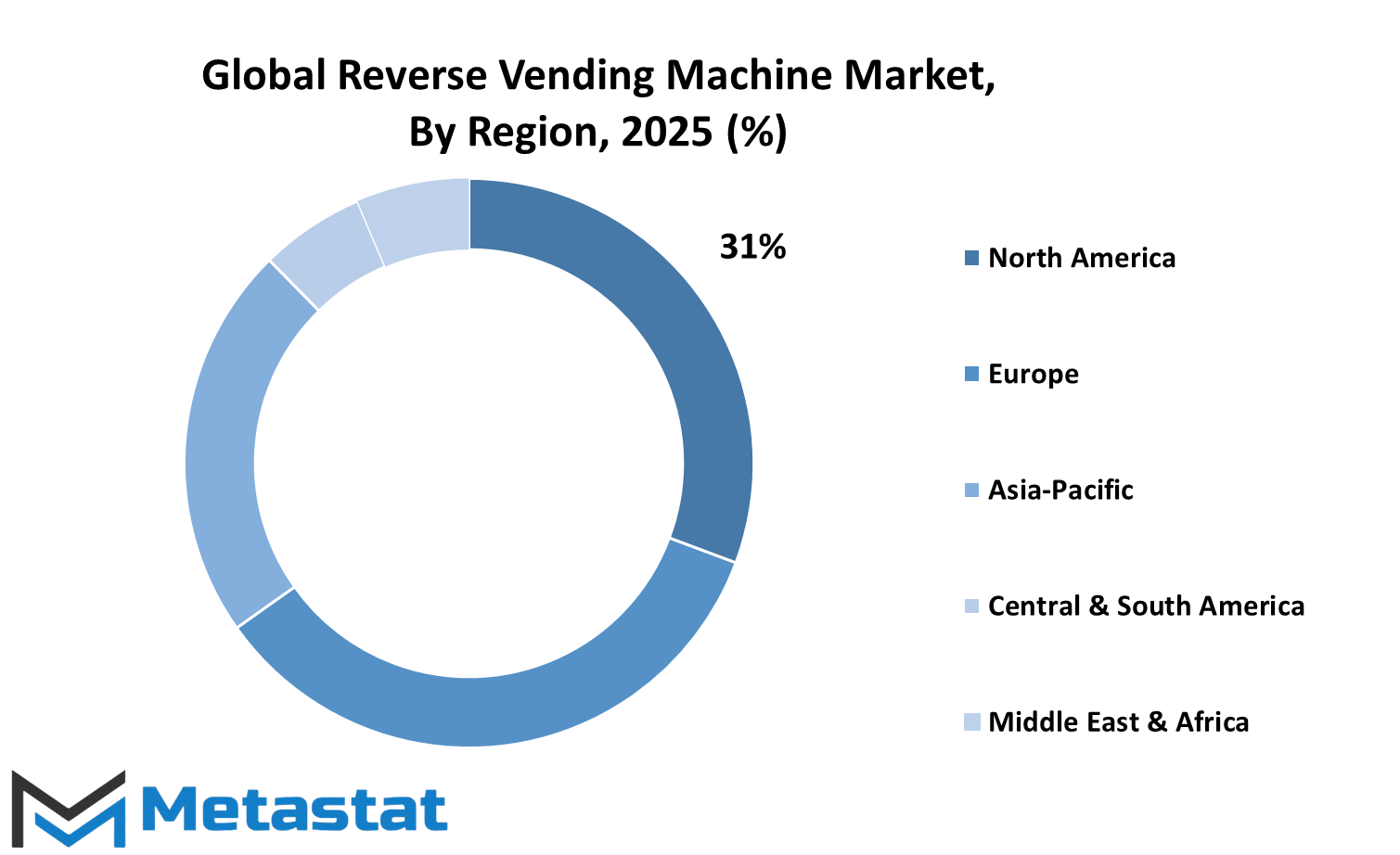
COMPETITIVE PLAYERS
The Global Reverse Vending Machine market is gradually reshaping the way recyclables are handled by people and businesses. As environmental responsibility increases, more businesses are finding new ways to implement automation and technology to enable recyclables to be processed automatically. Perhaps one of the most exciting routes taken is the use of reverse vending machines. These are machines that accept used beverage containers and reward the user or supply the user with an incentive for using the machine instead of throwing it away. It's a simple enough concept, but it's also incredibly powerful-direct and personal in promoting recycling, and immediate reward for the individual-beautiful long rewards for the planet.
In the near future, the Global Reverse Vending Machine market will experience slow but consistent growth since both consumers and governments are increasingly committed to sustainable practices, with rising awareness about waste and how it impacts the environment eventually leading to a greater demand for easy systems encouraging effective recycling. Many countries are predicted to develop stringent waste disposal and packaging policies that could force small and large businesses alike to consider investing in reverse vending systems.
Ongoing companies are fine-tuning their machines in readiness for prospects in the future with features like digital tracking, touch-less operations, and mobile payment.sys compatibility. One of the more known names in this area is TOMRA Systems ASA and continues to lead by offering smart recycling solutions. Envipco Holding N.V. and Kansmacker Ltd. are also pushing boundaries by developing user-friendly systems that work well in public areas and retail spaces. Meanwhile, startups like Circulis PTY LTD and Zeleno are working on more compact and cost-effective versions of the machines to make them accessible in regions with lower infrastructure development.
Some of the emerging companies like SEIU, EcoVend, and Endlos Innovations Private Limited will add to this emerging competition by focusing more on software integration, data analysis, and user interaction. RVM Systems AS and Teraoka Seiko Co., Ltd. are, likewise, refining their product lines to meet changing user expectations. With the involvement of companies like Veolia and Ecovative Design LLC, the focus is not only on technology but also on how these machines can support broader recycling and environmental programs.
This growing market, therefore, should influence recycling behavior and eventually determine the next big policies and consumer habits. This could lead to the next few years having recycling machines seen daily-from primary schools to office buildings, infiltrating everyday life in a virtually effortless and gratifying manner.
Reverse Vending Machine Market Key Segments:
By Product Type
- Metal Recycling Machines
- Plastic Bottle Recycling Machines
- Glass Recycling Machines
- Hybrid Recycling Machines
By Capacity
- Less than 300 Bottles/Cans
- 300 - 600 Bottles/Cans
- 600 - 900 Bottles/Cans
- More Than 900 Bottles/Cans
By Application
- Airports & Railway Stations
- Supermarkets & Shopping Malls
- Public Parks
- Universities & Schools
- Others
By End User
- Retail Stores
- Government Facilities
- Other
Key Global Reverse Vending Machine Industry Players
- TOMRA Systems ASA
- Envipco Holding N.V.
- Kansmacker Ltd.
- Circulis PTY LTD
- SEIU
- Aco Recycling
- Ecovative Design LLC
- EcoVend
- Sielaff GmbH & CO KG
- Incom TOMRA Recycling Technology (Beijing) Co., Ltd.
- Endlos Innovations Private Limited
- Teraoka Seiko Co., Ltd.
- RVM Systems AS
- Zeleno
- Veolia
WHAT REPORT PROVIDES
- Full in-depth analysis of the parent Industry
- Important changes in market and its dynamics
- Segmentation details of the market
- Former, on-going, and projected market analysis in terms of volume and value
- Assessment of niche industry developments
- Market share analysis
- Key strategies of major players
- Emerging segments and regional growth potential



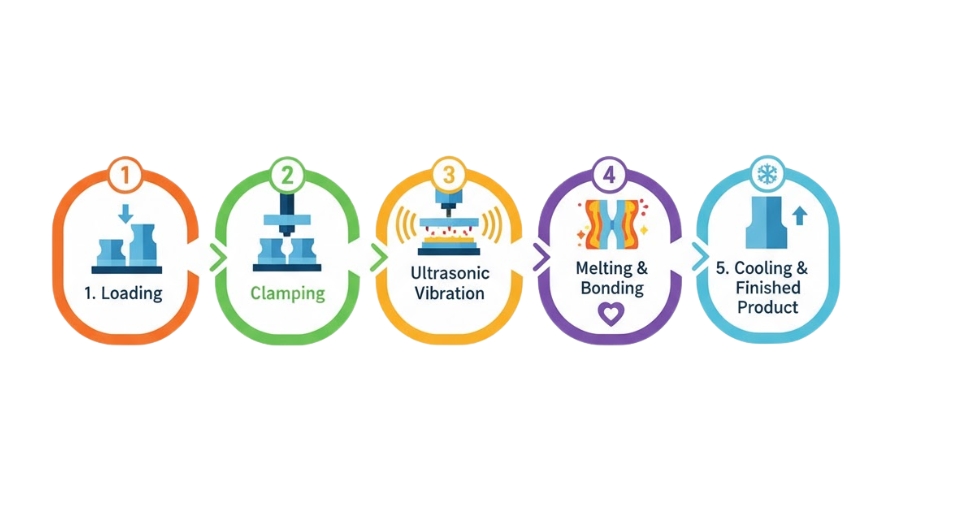
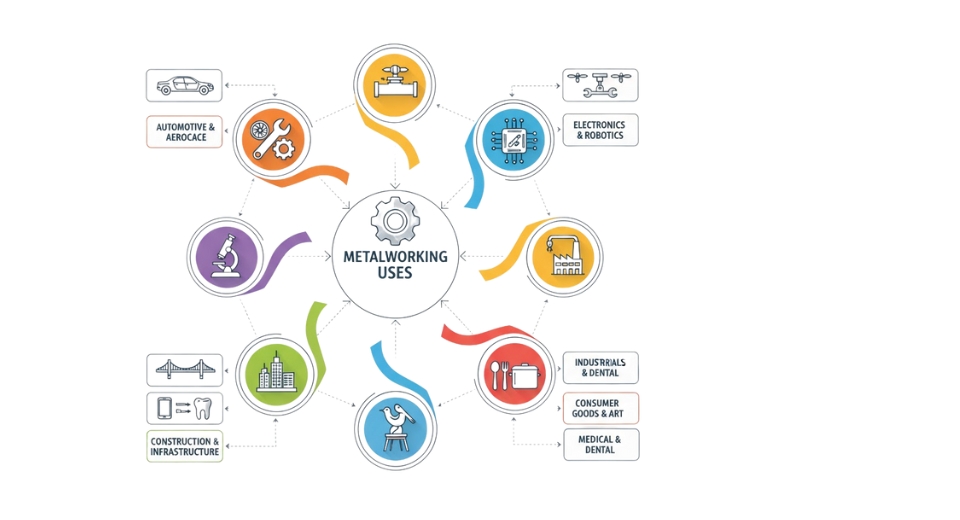
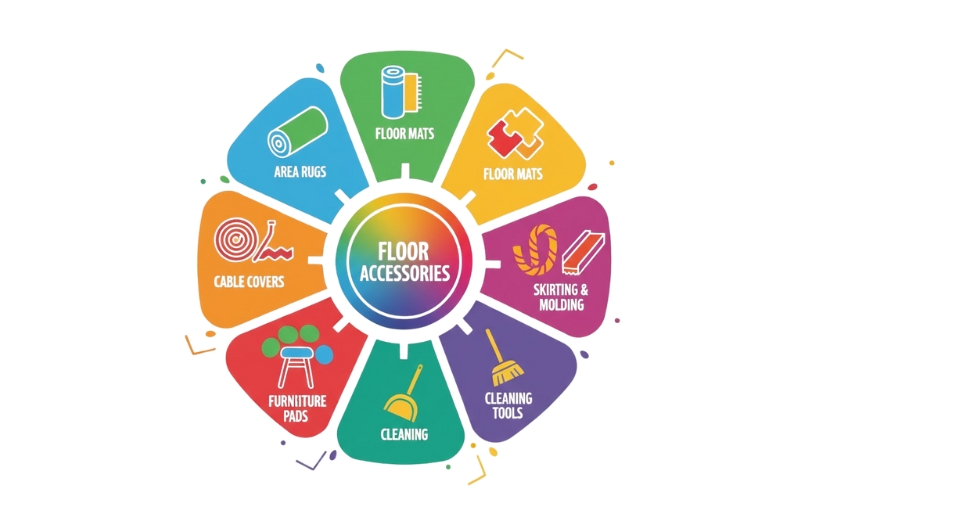
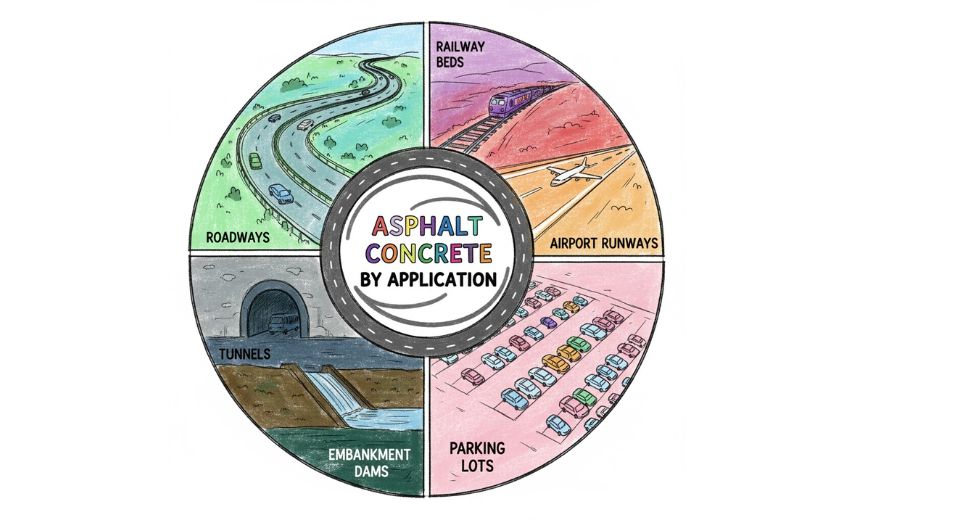

 US: +1 3023308252
US: +1 3023308252






